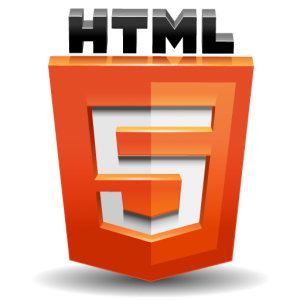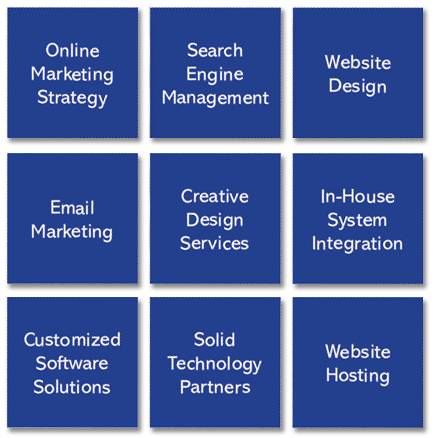Manage Your School’s Website With Ease
eManagerSite is the perfect website builder for schools, colleges, and community organizations. Manage staff, notify parents, schedule events, integrate blogs and social media, and so much more. eManagerSite CMS is a complete website editing tool that fits any need – and any budget.
Unique Features for Schools:
- Handle The Latest Designs with advanced scripting and more
- Simple To Use for everyone – tech-savvy or not
- Intranet & Extranet Sites for managing staff & students
- Easy Payment Portal for school lunches, field trips, & more
- Pre-built Forms including Contact and Payment forms
- Unlimited Storage for all your pages, photos, and files
- Mobile Ready Design automatically resizes to tablets & phones
- Send Out Newsletters & Alerts using our mass email tool
- Unlimited Number of Blogs for teachers and students
- Change User Permissions – users can only edit certain pages
- Schedule Events & Get Registrations using built-in calendars
- Have Interactive Learning with podcasts, built-in video & more
- Bid List & Bid Results pages that can be easily edited and updated
- Lifetime Support available through phone, email, and in-person
- Free Trial with no risk or commitment
Review the Features below to learn more!
- Calendar & Registration
- Emails and Alert System
- School Store & Payment Portal
- Mobile- and Tablet- Ready Design
- Downloads & Resources Center
- Blogs & Social Media
- Security and Unique Permissions
- Try It for Free!
Calendar – Event Scheduling, Registration & More!
Now you can keep students, parents, and faculty in the loop with our integrated Calendar tool.
Easy To Use:
The Calendar tool functions like any other calendar tool you’ve seen: double-click to add an event, enter in the details, and press “OK”. You can have several calendars, and can limit access to calendar editing to only certain individuals.
Add & Manage Events
Events can store as much information as you need – exact timing, pricing, PDFs, images, Google Map of the location, and of course anevent description that can be edited just like the rest of the website – with font color and style choices included. Multiple events can be scheduled in a day, and events can be set to only be viewable by certain people. We give you full control of what you need your calendar to be like.
Registration & Payments
Our events are fully interactive and integrated with the rest of your website. Events that require registration will send that information to our Customer Relationship Manager tool, and events that require payment will send that information to our eCommerce tool. This is done automatically – all you have to do is check off boxes like “Require Registration” and “Require Payment”.
Email & Alert System – Send Out Updates and Newsletters
Know how to use Microsoft Word? Then you know how to create and customize your own email templates for newsletters, school closings, and general updates. Our email system is easy to use and can handle thousands of emails being sent out a month.
Just Start Typing
Our email tool has been engineered to be as simple as our website editor. All you need to do is click and do whatever you want – add text, insert images, create hyperlinks, and more. Even those who are not computer savvy can become email masters with our tool.
Use Our Templates or Start from Scratch
Your email system comes with several email templates pre-made for you already. Use those, or make your own using our easy “what you see is what you get” editor. Things like background colors or header images can be easily changed based on the situation.
Manage Email Recipients Easily
Want to have an email blast sent out just to teachers? Have a writing club that wants to email a monthly poetry newsletter? You got it. eManagerSite’s email system was made for full customization in terms of who gets your emails and how often. You can create an unlimited amount of email lists (such as “Teachers” or “Third Grade Parents”) and then send out emails specifically to those groups.
Store & Payment Portal – Sell Items and Process Payments
Your website comes equipped with an amazing store that can be used for any purpose you can imagine. Sell tickets or merchandise, and then collect payments all through your site.
Go Paperless
Tired of nagging kids to fill out permission slips and payment forms? Enter the digital era with our built-in payment portal. Add your field trip or prom event to your unique eCommerce store, and then have parents and students safely and securely purchase those items through your site. There is no third-party tool, so everything is easy, safe, and fast.
Sell Merchandise and Events
Now anything can be sold through your website – Valentine’s Day roses, school merchandise, prom tickets…anything you can think of, you can sell through your site. Our eCommerce tool makes everything automated so you can focus on the important things.
Secure Payment Portal
Our Payment Portal is easy to use and guaranteed to be hacker-resistant. Users can pay through debit, credit, or check and have peace of mind knowing their information is secure.
Mobile- and Tablet-Ready Design – Your Site Works On All Devices
Once your website is in our eManagerSite CMS, it will work in all browsers and devices – so anyone looking on a smartphone, tablet, or desktop will be able to view your site and get the information they need.
For Phones
Parents or kids that need to look up homework assignments or field trip prices can do it all through their phone. Your website will shrink and adapt itself to any size device. Text, images, and links will format themselves automatically to be the most legible and usable to whoever is viewing your site. Your menu will switch to one long drop down that makes it easy for a mobile user to get where they want to go – and fast.
For Tablets
Tablet users get the best of both worlds when it comes to viewing your site. Images and text appear large and crisp on the site, while the site reformats itself so that every page is easy to navigate to. Just like for phones, contact information and important links will always display prominently on the page.
Accessible for Everyone
Having a mobile-ready resizable website means that anyone anywhere can view your site. Now students can feel engaged and interested about school events, and parents can get quick access to grades, fees, and other useful information. You can even decide that certain information should be shown only to mobile users or only to tablet users. Maybe a student is primarily looking for test dates when they’re viewing through the phone, so you can make that link appear near the top. Your site can be easily altered dependent on the situation.
Downloads & Resources Center – All Your Files in One Place
eManagerSite CMS comes free with a Downloads and Resources Center. Your forms, PDFs, menus and more are now in one easy-to-maintain area that matches the rest of your website design and allow for users to easily access anything they need.
Store All Your Files
Our sites are engineered to be fast and store huge amounts of files. Putting your forms and other files on our site is a quick process – and having students and parents download them is just as quick!
Accessible on Phones and Tablets
Your Downloads and Resources Center adapts itself to any browser or device, just like the rest of your site.
Beautiful Design
Forget clunky tablets and ugly hyperlinks. Your files will be displayed as beautifully as the rest of your website. Our designs are user-friendly and aesthetically pleasing, so you can get the best of both worlds.
Blogs & Social Media – Stay Modern and Interactive
To have a truly great presence on the web, a school needs a blog and social media integration. eManagerSite CMS has got you covered.
Start Blogging
Tired of nagging kids to fill out permission slips and payment forms? Enter the digital era with our built-in payment portal. Add your field trip or prom event to your unique eCommerce store, and then have parents and students safely and securely purchase those items through your site. There is no third-party tool, so everything is easy, safe, and fast. Our blogs work just like any other blog tool, so you can categorize your blog posts, allow readers to post approved comments, add images and links, and allow various people to post on the same blog.
Integrated Social Media
Now your social media can become an extension of your website. You can embed buttons that lead to your social media networks, or you can even embed tweets and postings from your networks onto your website. Your blog can also be hooked up to your Facebook or Twitter so that everyone can keep up to date.
Full Customization
Unlike other blogging tools, your blog will truly look like a part of your site. No one will ever have to leave your site to visit your blog, and it will blend in flawlessly with the rest of your site. You also have complete control over how the blog acts, who can comment on it, and what it will look like.
Security and Unique Permissions – Have Full Control and Peace of Mind
You have enough to worry about – eManagerSite CMS lessens the burden by making sure your site is ultra-secure. You have control over who gets access, what they can touch, and what changes go live online. We support you with backups and automatic security features that safeguard against a wide variety of potential mishaps.
Latest SAS Security
eManagerSite CMS hosts all our websites on our own secure servers. This not only means that your site is virtually “unhackable”, but that it is also safe against unintentional disasters such as accidental deletions or even weather-related incidents. Nightly backups and stringent security ensure that your site can never be “lost”.
Limit Access
Limit access to certain sections or even pages using our detailed Settings panel. Assign roles to staff, block off areas for certain groups, and best of all, ensure that nothing is added to your site withour your approval.
Peace of Mind
Our CMS’ security infrastructure is automatically implemented – there is little to no work on your part to protect your site against the unknown. Private information can be stored on your website – either on a webpage or entered into a form – without concern for if someone can steal that data and use it against you. Credit card data, medical records, and more can be kept in your site’s database without worry.
Free Trial – What Are You Waiting For?
eManagerSite CMS has a lot of great benefits, and we want you to experience it without having to worry about the commitment. Try us for free – and then decide for yourself if we’re the best CMS tool for you. (We might be biased, but we think we are.)
Try For Free
You can keep your website – with your blog, store, emails, calendar, and all – in our CMS tool during the trial. All the features you’d normally have on the plan can be accessed during the free trial.
Monthly Billing If You Buy
If you do decide to continue with us, billing will occur monthly without any long-term commitment requirements. That means you can stay with us for 3 months or 3 years.
Lifetime Support Included Free
An eManagerSite School package includes a variety of support options for the lifetime of your plan – training videos, phone calls to our help desk, online support, and even in-person support! The eManagerSite team is always here to help you with any issues or questions you have.
Contact Us Now To Try eManagerSite Today!
Portfolio
Schools and Educational Websites
Rocky Hill Education Website
Sawyer School Website
Fairfield Schools Website




